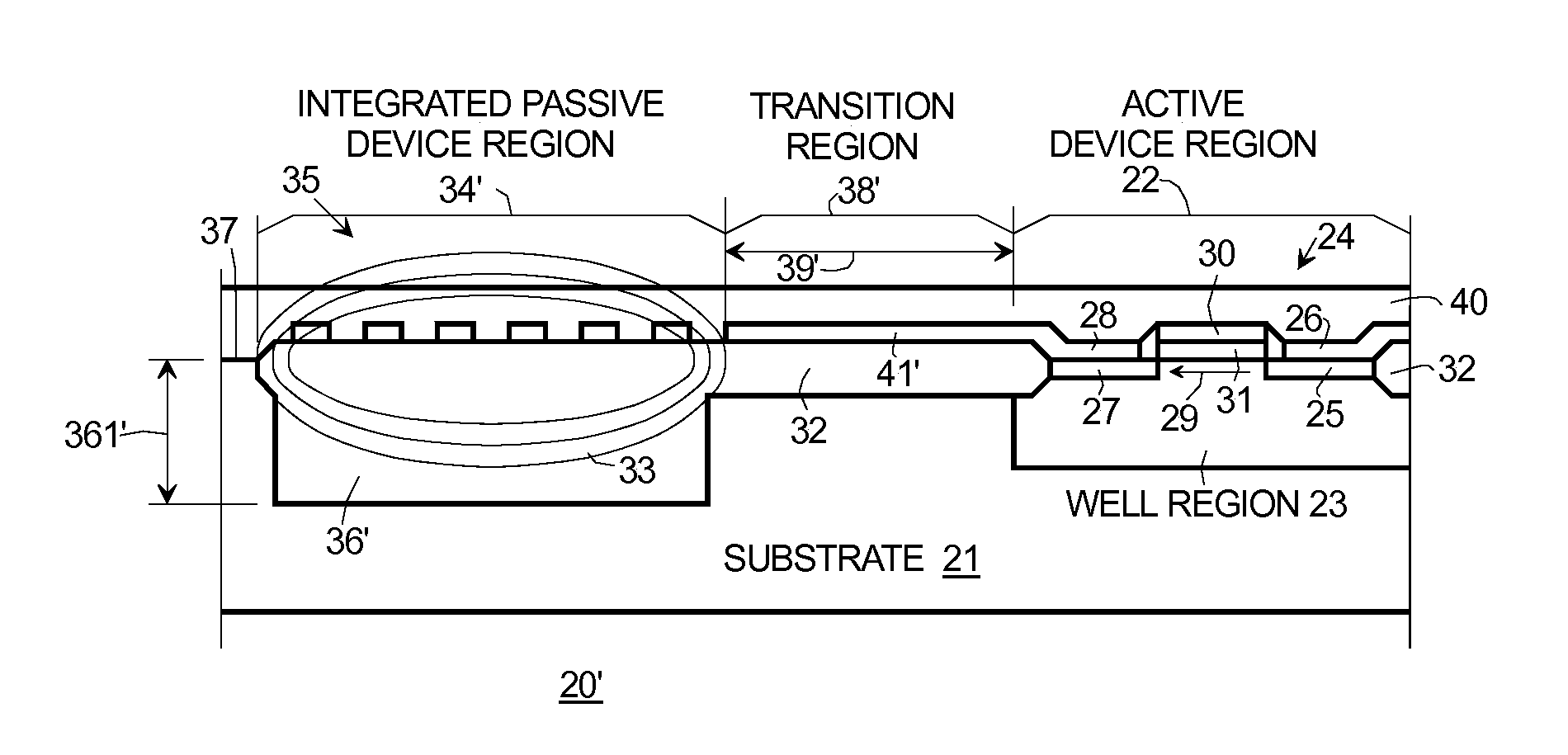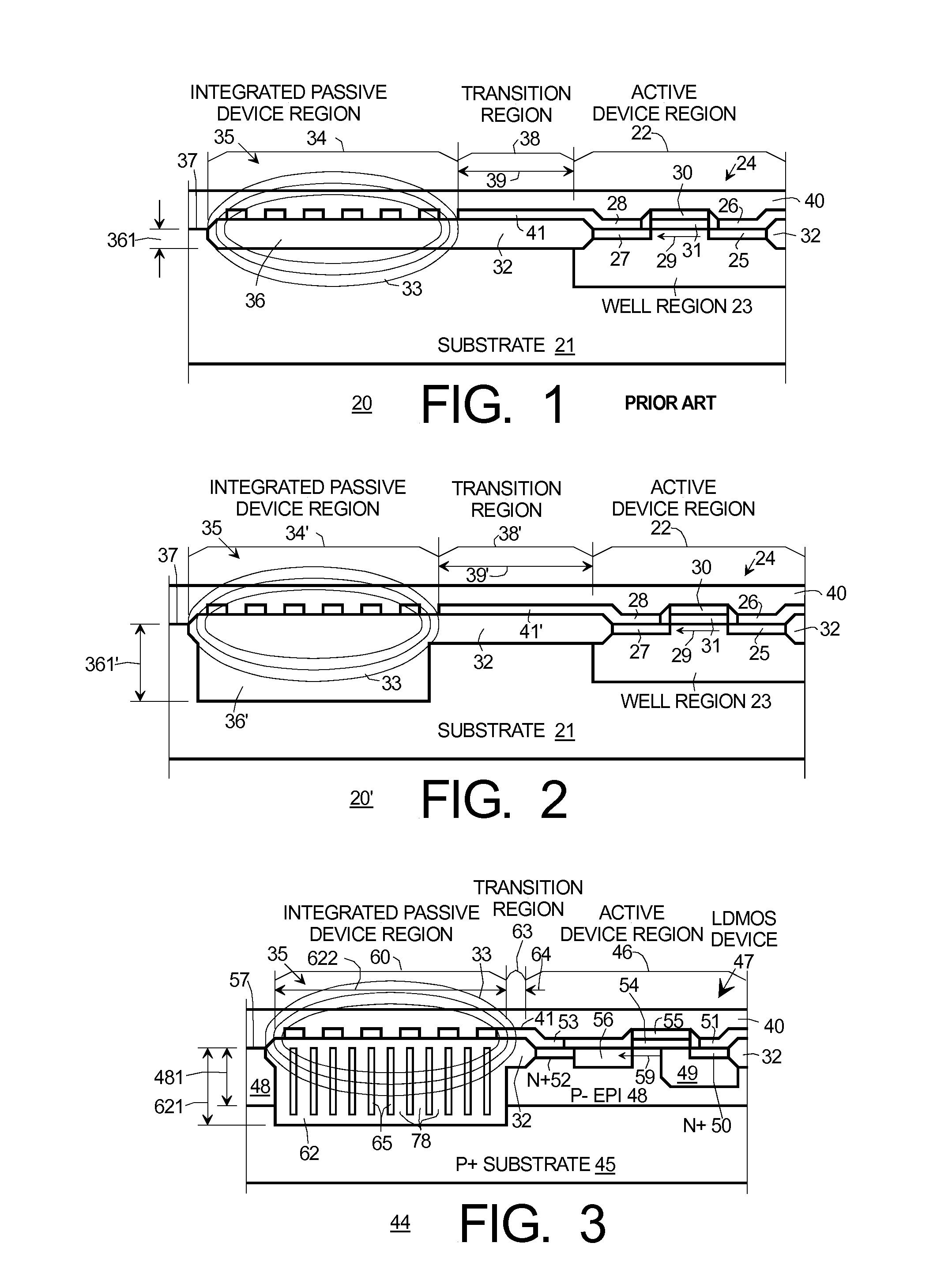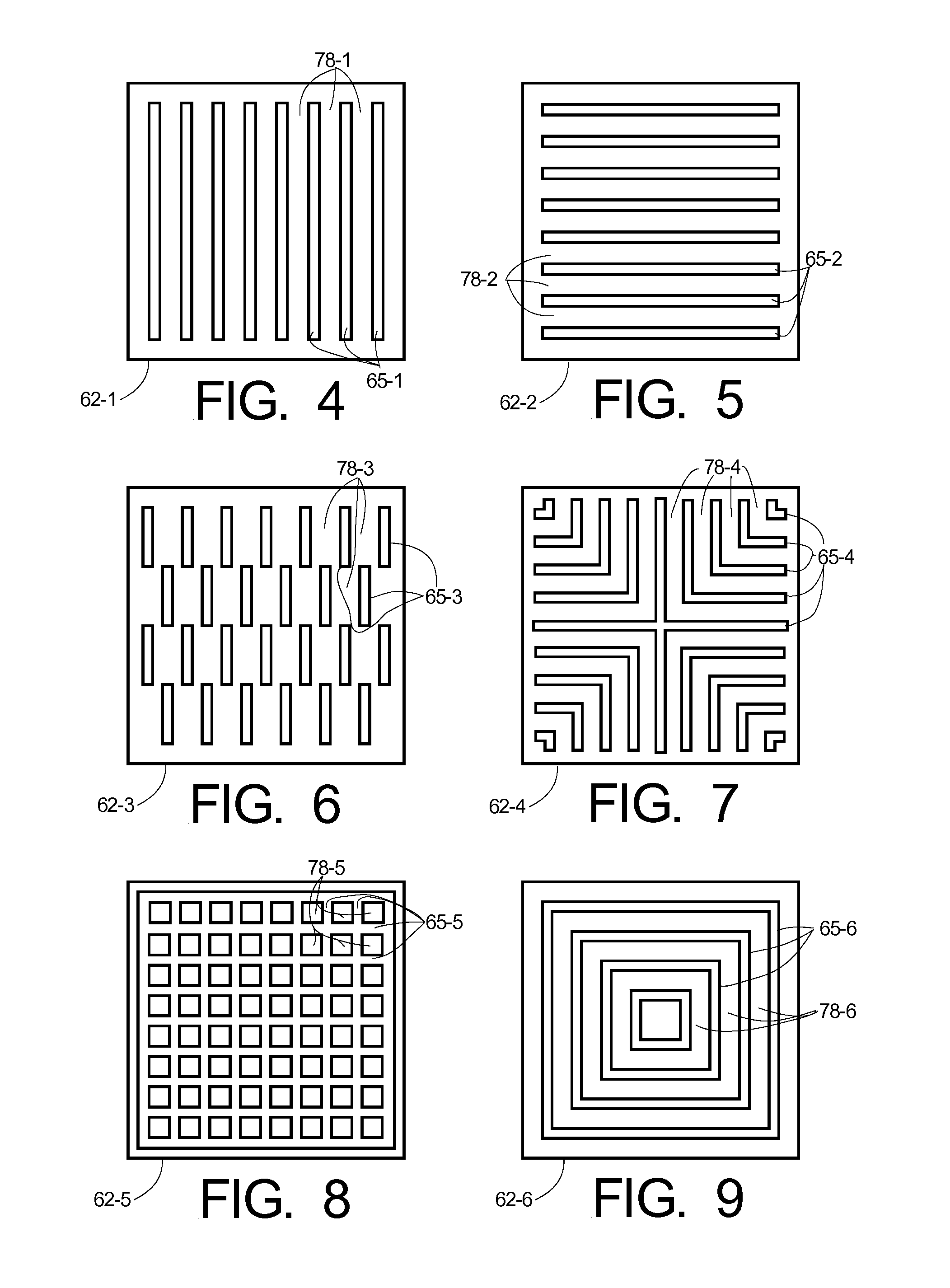Low loss substrate for integrated passive devices
- Summary
- Abstract
- Description
- Claims
- Application Information
AI Technical Summary
Benefits of technology
Problems solved by technology
Method used
Image
Examples
first embodiment
[0038] there is provided a method (112-128) for forming an electronic element (44, 44′, 44″) incorporating an integrated passive device (IPD) (35) and an active device (24, 47), comprising, providing (112, 121, 124) a substrate (45) of a first material having a first thermal expansion coefficient (TEC) and having a first surface (57), wherein the substrate (45) has therein a first portion (46) adapted to receive the active device (24, 47) and a second portion (60) adapted to receive the IPD (35), forming (112, 121, 124) a mask (72) on the second portion (60), the mask having spaced-apart openings (73, 73′, 73″) of a first width (75, 75′, 75″), etching spaced-apart trenches (74, 74′, 74″) of substantially the first width (75, 75′, 75″) to a first depth (741, 741″) in the substrate (45), leaving columns (76, 76′, 76″) of substantially undisturbed substrate (45) material between the trenches (74, 74′, 74″) and other portions of the substrate (45) material beneath the trenches (74, 74′,...
second embodiment
[0039] there is provided an electronic assembly (44, 44′, 44″), comprising, a semiconductor (SC) substrate (45) having a first thermal expansion coefficient (TEC) and an active device region (46) and an integrated passive device (IPD) region (60), an integrated passive device (IPD) (35) located in the IPD region (60), a region of an insulating material (78, 78′, 78″) having a second TEC, located in the IPD region (60) and adapted to support the IPD (35), and inclusions (65, 65′, 65″) of a further material (82) within the region of insulating material (78, 78′, 78″) thereby forming a composite dielectric region (62, 62′, 62″), wherein the further material (82) has a third TEC less than the second TEC, and wherein the inclusions (65, 65′, 65″) are electrically isolated from the substrate (45) and the IPD (35). According to a further embodiment, the inclusions have a width (80, 80′, 80″) in the range of about 0.2 to 5 micrometers. According to a still further embodiment, the inclusions...
third embodiment
[0040] there is provided an electronic assembly (44, 44′, 44″), comprising, a semiconductor substrate (45) comprising silicon, with an active device region (46) and an integrated passive device (IPD) region (60) thereon, a composite dielectric region (62, 62′, 62″) located in the IPD region (60), comprising silicon oxide regions (78, 78′, 78″) with electrically isolated polysilicon or amorphous silicon inclusions (65, 65′, 65″) therein, an integrated passive device (IPD) (35) located above the composite dielectric region (62, 62′, 62″) in the IPD region (60), and an active device (24, 47) located in the active device region (46) and electrically coupled to the IPD (35). According to a further embodiment, the IPD region (60) and the active device region (46) are laterally separated by less than 100 micrometers. According to a still further embodiment, the IPD region (60) and the active device region (46) are laterally separated by less than about 50 micrometers. According to a yet fu...
PUM
 Login to View More
Login to View More Abstract
Description
Claims
Application Information
 Login to View More
Login to View More - R&D
- Intellectual Property
- Life Sciences
- Materials
- Tech Scout
- Unparalleled Data Quality
- Higher Quality Content
- 60% Fewer Hallucinations
Browse by: Latest US Patents, China's latest patents, Technical Efficacy Thesaurus, Application Domain, Technology Topic, Popular Technical Reports.
© 2025 PatSnap. All rights reserved.Legal|Privacy policy|Modern Slavery Act Transparency Statement|Sitemap|About US| Contact US: help@patsnap.com



